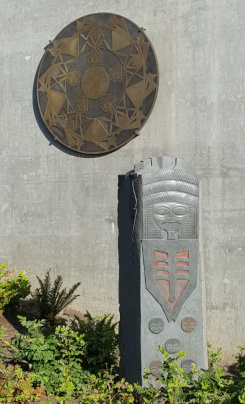| We Have Always Lived Here | |
|---|---|
 One of the basalt carvings and the bronze medallion installed on the east end of the bridge (2020) | |
 | |
| Artist | Greg A. Robinson |
| Year | 2015 |
| Medium |
|
| Location | Portland, Oregon, United States |
| 45°30′18″N122°40′01″W / 45.5049°N 122.6670°W | |
We Have Always Lived Here is a 2015 public art installation by Greg A. Robinson, installed at Tilikum Crossing in Portland, Oregon, in the United States. The work consists of two traditional Chinook basalt carvings sited at both ends of the bridge, plus a bronze medallion on the northeast side of the bridge.


